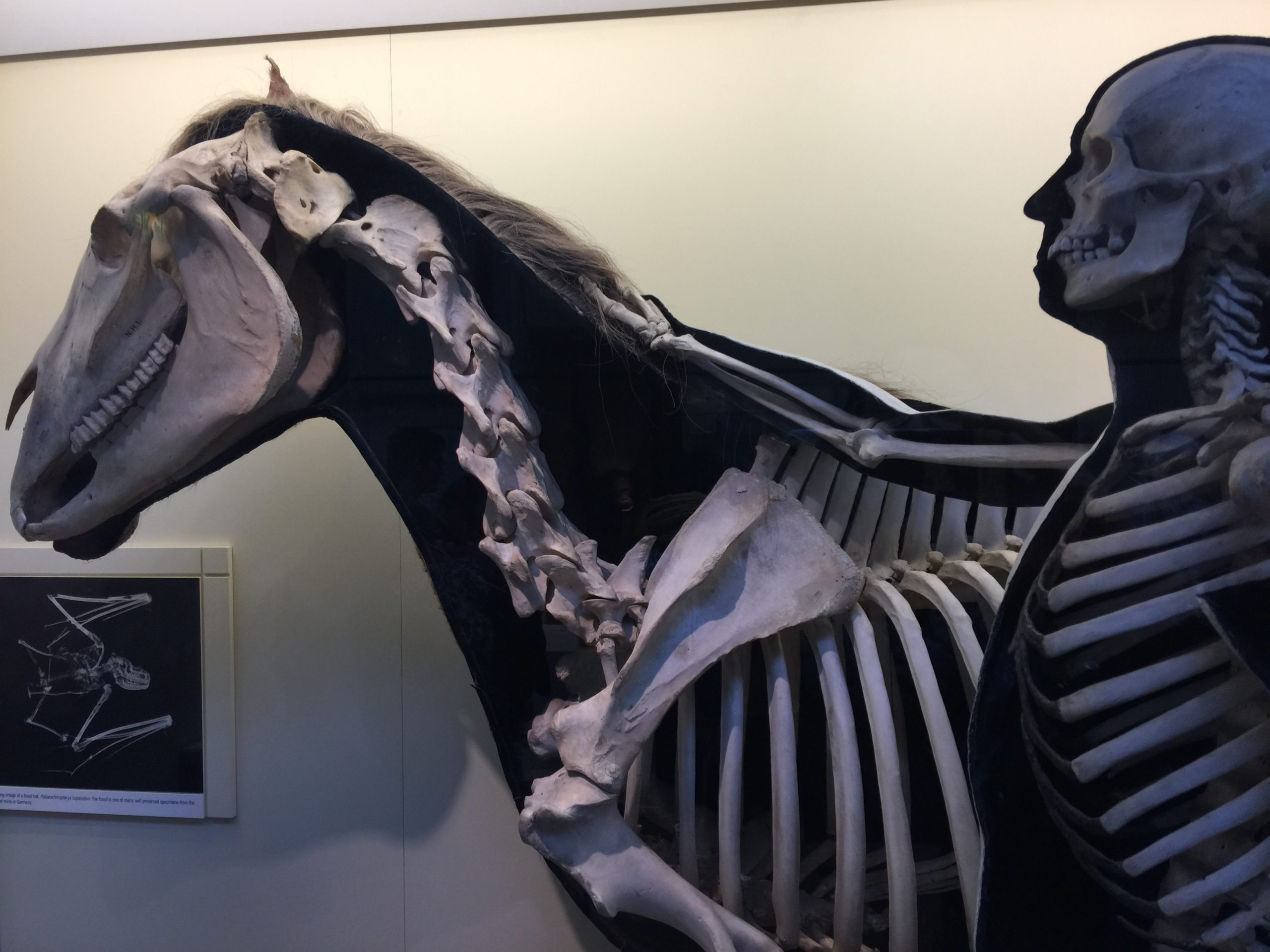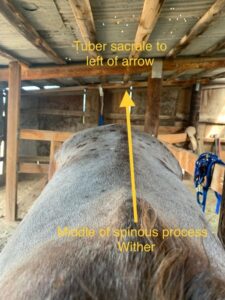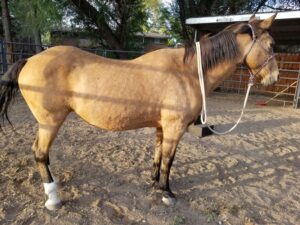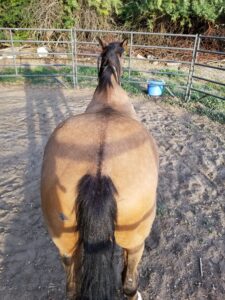One of the pain areas that is very common in horses is the spine. And one of the most common things that people want to do is begin an exercise regimen for the equine with back pain.
 Generally, back pain affects the entire body. If you have ever experienced back pain, it can have a debilitating affect on your activity, from walking to sitting, standing and even lying down. If someone wants to make you do exercises if you’re in excruciating pain, that can be the worst thing for you.
Generally, back pain affects the entire body. If you have ever experienced back pain, it can have a debilitating affect on your activity, from walking to sitting, standing and even lying down. If someone wants to make you do exercises if you’re in excruciating pain, that can be the worst thing for you.
And, people are not the only ones who can have scoliosis, or, a condition where the spine is curved sideways. The horse can also have a kissing spine, sciatica, hunter’s bump, and many other conditions.

Unfortunately, horses are not often in the position to say no to what we prescribe for them. They will resist in other ways – refusal to move, bucking, rearing, biting, which also may hurt them. But their intention is to get you to stop what you’re doing, or making them do.
At this point in the process, if I come to work with a horse with back pain, I want all exercises stopped until we can evaluate what is going on. I will do a full evaluation of the spine and legs, shoulders and ribcage, to see what parts of the body are being influenced. One area of the spine can be demonstrating, either visually or through palpation, a pain area, while another area of the spine is less mobile and can be the primary culprit. We just don’t know until we check it out.
Next, once the horse is moving more fluidly, which may take one to five or so sessions, always depending upon the degree of severity which doesn’t always reveal itself immediately, we can add some very simple exercises that are called in Ortho-Bionomy, “post-techniques,” to strengthen the spine and extremities while the horse is receiving bodywork.
Working with back pain is not a one-shot fix. It took awhile for the condition to develop, unless it’s an acute injury. Usually if the spine is pushed into what we may perceive as its “right” position by an assertive modality, it will relax back into the posture that it knows well. When my mother used to push my shoulders back because she didn’t like my hunched posture, it didn’t make it easier for me to keep my shoulders back. And what she didn’t know was, shoulders jammed back wasn’t really a healthy posture. Posture needed to come from within, not be forced from without. I needed to learn how to breathe more fully, and open up my sternum and ribcage, and get to know my body.

If we work with what is, where the spine is at the moment of contact, and support that, it will feel “met” and be able to make more lasting changes. Regular maintenance is vital in order to maintain the spine and remind it of what felt good, remind it that it has its own intelligence and eventually, once the big pain is not so present, it can even self-correct. After that self-correction phase, the bodywork sessions can go deeper, address layers that are possibly causing the more obvious problems to keep reoccurring.

The types of treatments that are imposed from the outside such as injections and surgeries are expensive and may work to alleviate the problem immediately, but they do nothing to support the spine and extremities from within. The owner is often happy because they have done what was prescribed and have high hopes for a positive outcome. And sometimes the treatment is useful for interrupting a chronic pain cycle. Owners also may be able to ride their horse for awhile which makes them happy, because having a horse standing around not able to participate in the season’s activities makes riders crazy.
Owners may opt to do the injections as well as do the bodywork, which can be useful, because then the body is being met as well as getting the pain addressed immediately.
Then the business of the exercises – not all exercises that are commonly recommended are going to be a good fit for every horse.
- Lunging, for example, can exacerbate a fracture if you don’t know the horse has one. Trying to lunge a horse who is in too much pain to move on a circle is not a good idea.
- Riding on a twenty-meter circle is not a good idea if the horse has trouble disengaging his hinds and has a lot of pelvic or sacral pain.
- The round pen may not be good for the same reasons – any lameness on any leg or limb.
- Going over obstacles may be too much for some horses.
If I don’t have a diagnosis, I will walk straight lines with a horse where he’s comfortable doing so. I may add ground poles at ground level once I feel he/she can lift legs comfortably.
In humans, the problem with spinal surgeries is that you may repair one part of the spine, but it will weaken the entire spinal chain and chances are, you will have problems with another part of your spine later on. If you can avoid surgeries, do so and opt for bodywork, physical therapy or what works for you. If you have no other choice but surgery, then of course, go for it.
With horses, the same is true. The active life of the horse will decrease with age anyway, so owners may think if I do this surgery today then I can ride for x number of years before the repercussions come, or maybe they don’t even know there are repercussions in the rest of the spine. It’s definitely a personal decision.
I have worked with many working horses on their back pain and been very successful restoring them to varying levels of their work life with rest, consistent techniques and then the post-technique exercises. The fascia must be able to made more flexible so that it can support the structure. And fascia doesn’t just enclose muscles, it is the supporting envelope for all other systems except the digestive and respiratory systems.
It takes a commitment on the part of the owner, and I believe most owners are very committed to wanting the best for their horses. It’s hard to figure out what the “best” is sometimes, as there are so many options.
Owners can also learn a number of very powerful, gentle techniques to support their horses, which ultimately empowers them to not need as many therapeutic visits.
Horses also appreciate the relationship aspect of bodywork. They are used to being “done to,” as you may feel when you’ve had to have a number of invasive medical procedures done. They have shoes nailed on (in some cases), dewormers and medicines applied, injections and procedures done where needed. Having someone work on them just for them, listening to them, can make an enormous difference in the way they feel about their relationship with their humans.
As an owner and bodyworker, I don’t always know what’s best. But I do know that maintaining equines with bodywork gives them a big headstart, supports the system before and after injury, makes them less injury prone over all (notwithstanding poor riding, weight, saddle fit and overriding).
The less invasive and the more relational we can be with horse care, the better for our animals’ health, longevity and well being, and also for our pocketbooks.
A two-day weekend course related to this topic will be offered in Santa Fe, New Mexico May 20-21st, 2023 entitled Introduction to the Equine Spine.


